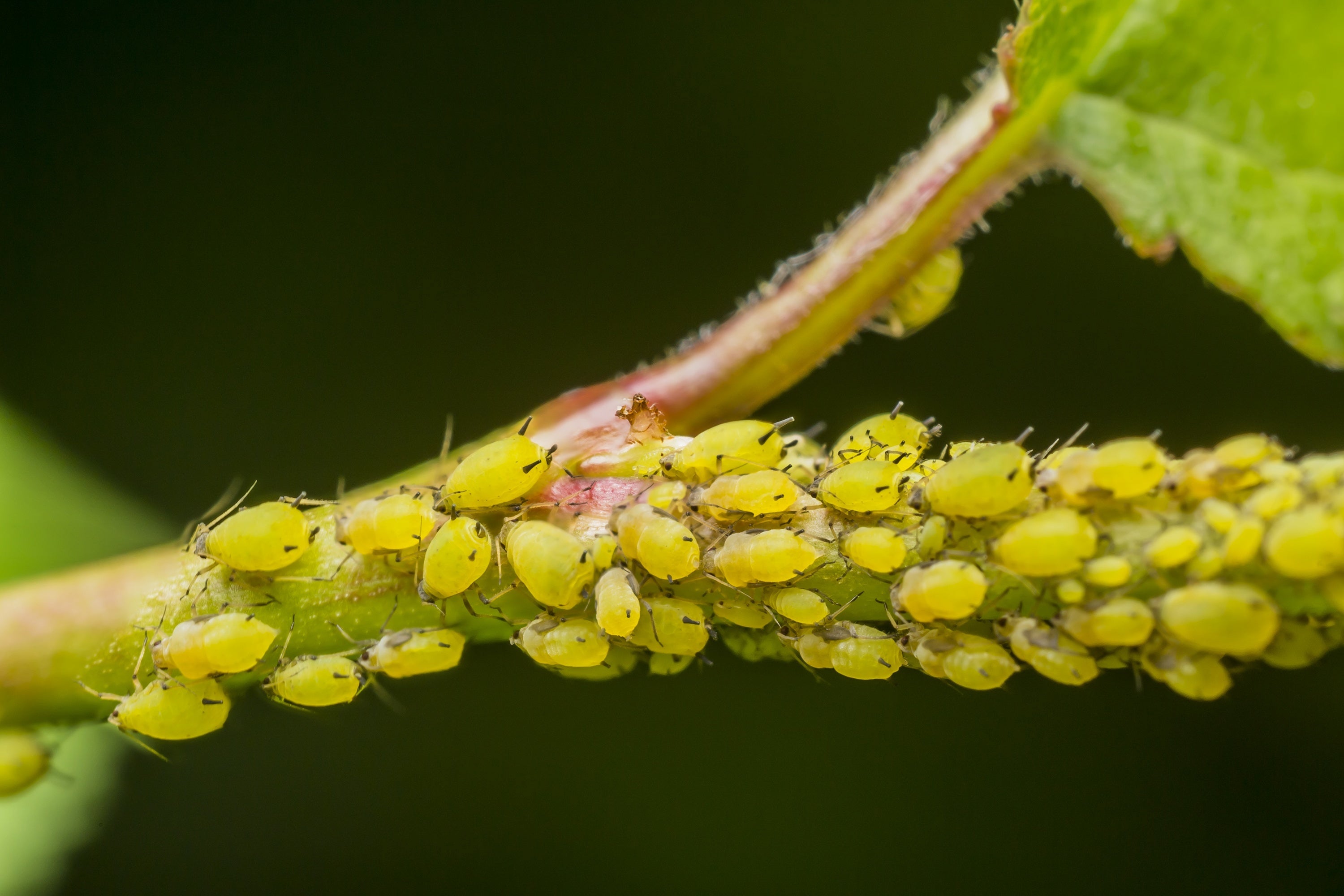Aphids are naturalized all over the world including more than 1,300 species found in just North America alone, most of which are harmful to the home garden. Most aphid species are found on trees including elm, plum, and peach but are notoriously widespread on such garden crops as lettuce, bean, cucumber, corn, crucifers, and even more so on rose bushes.
Despite being so small, aphids are actually a very complex and evolved insect in which their adaptive nature is directly responsible for them being so problematic in the garden.
Most aphids are wingless but, should necessity arise and a host plant dies off, aphids are able to grow wings to fly to a new host. Aphids are some of the fastest reproducing insects because they are asexual and most females are born pregnant, making it possible for only a single female aphid to colonize and infest an entire plant.
How to Get Rid of Aphids
- Aphid Distribution: Temperate zones worldwide, with much less diversity in the tropics
- Aphid Host Plants: Rose bushes, stone fruit, fruiting trees, orchids, nearly any fruit or vegetable
- Aphid Damage: Curled, yellow-spotted leaves and stunted new growth
- Aphid Life Cycle: 30 days
- Aphid Eggs Per Lifetime: ~150-200
- Aphid Control: High pressure hose, neem oil, castile soap, dish soap spray, Diatomaceous earth
- Aphid Predators: Ladybugs, lacewings, soldier beetle
- Most Common Aphid in North America: Green Peach Aphid (Myzus persicae)

What Do Aphids Look Like?
Aphids are often confused with spider mites because they’re very similar in size and each infest nearly the same plants both in and out of the garden.
While the most common aphids are widely known to be green, tan, or mottled brown, aphids can actually be found in nearly every color including red, orange, blue, pink, and shades of purple.
Aphids are soft-bodied insects that lack any discernible shell or protective scale even when viewed with the naked eye. If having trouble differentiating between an aphid, spider mite, or mealybug infestation, observe if any eggs have been laid, as each of them have very different nesting habits.
Aphid Damage
A few individual aphids on a plant likely will not affect its overall health but an infestation will quickly begin to desiccate the host. Like thrips, mealybugs, and spider mites, aphids are sap-suckers that puncture the foliage to directly access essential juices and sugars within the leafy mesophyll.
As soon as these sugars are removed from the host plant, leaves will immediately begin to show signs of curling, stunting, and yellowing as a result of their vital mesophyll being consumed by the aphid infestation.
As aphids feed on the sugary content within the leaf, it excretes a sticky substance known as honeydew which often attracts the local ant population for free sugar, while also potentially molding and turning black.

What Do Aphids Eat?
Unlike some larger insects and leafhoppers, aphids don’t actually eat the plant itself but rather suck the sugary sap (sucrose) straight from the plant’s phloem, the living tissue responsible for transporting nutrients to the rest of the plant created during photosynthesis.
Since aphids feed almost exclusively on sucrose, they must ingest so much to acquire even trace amounts of protein, causing aphids to excrete most of the sugar they consume. With more than 1,300 species in North America, each species of aphid has a preference of host plant ranging from cruciferous vegetables, annual vegetables, rose bushes, and deciduous trees.
Aphid Eggs

While many species of aphid do not lay eggs and perform live births, the species of aphid that do lay eggs generally do so on the underside of leaves, stems, and nodes.
Depending on the species of aphid, they may lay their eggs in a perfectly uniform line or, as is found in most annual gardens, aphids will scatter their eggs on the leaf without any discerning pattern. While there are thousands of different species of aphid, most share a similar pale yellow and oblong shape which many say resembles that of a miniature grain of rice or wheat.
Aphid eggs can be easily dislodged when sprayed with a high pressure hose. Remember that just one eggs will mature into another adult capable of laying up to 200 eggs. If you're lucky enough to spot the eggs early, spray them off.
How to Get Rid of Aphids
The most ecological way to get rid of aphids is to introduce ladybugs into your garden by purchasing them at a nursery or garden supply store. Ladybugs are absolute gluttons for aphids and mites and are known to eat an average of 5,000 aphids in such a brief lifespan.
On more established plants such as a rose bush or fruit tree, aphids may be simply sprayed off with a high pressure hose.
Aphid Treatment
Aphids are soft-bodied pests able to be easily removed by any number DIY insecticide sprays and solutions. The second most effective means is to spray infested plants with a solution of either neem oil, dish soap, or castile soap. These solutions have a very low toxicity to humans but are proven to quickly cause aphid infestations to dehydrate, wither, and die.
Aphid Spray

- Dish Soap and Water - 2 tbsp to 1 quart water
- Natural Aphid Spray Vinegar - 1 part vinegar to 3 parts water
- Organic Neem Oil Spray - 1 tsp neem oil and 1/4 tsp dish soap to 1 quart water
- Castile Soap - 1 tbsp to 1 quart water
- Tomato Leaf Spray - Soak 1-2 cups chopped tomato leaves overnight in 2 cups of water
- High Pressure Hose - Many insecticides are sold to be attached to the end of any common gardening hose for immediate aphid control




